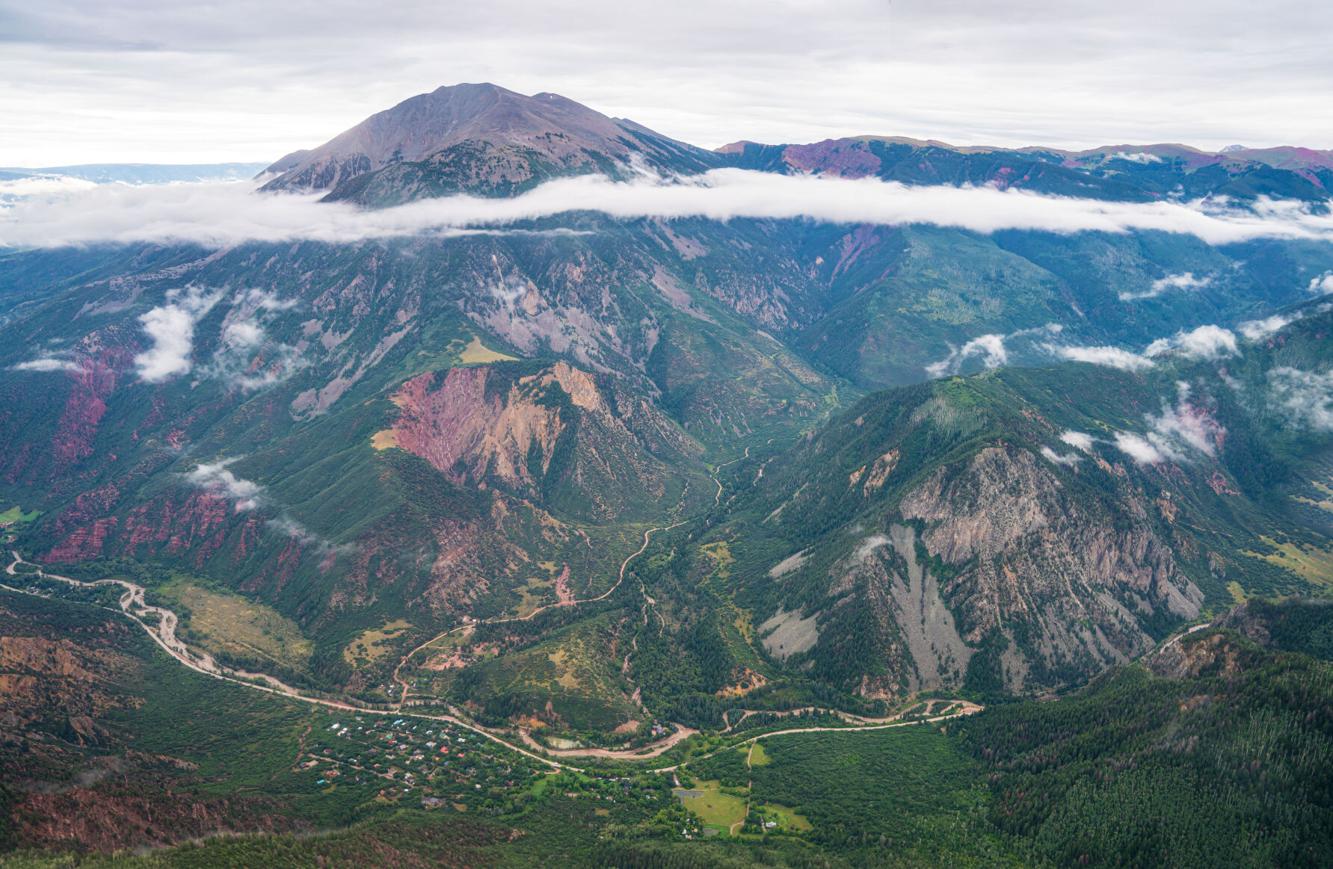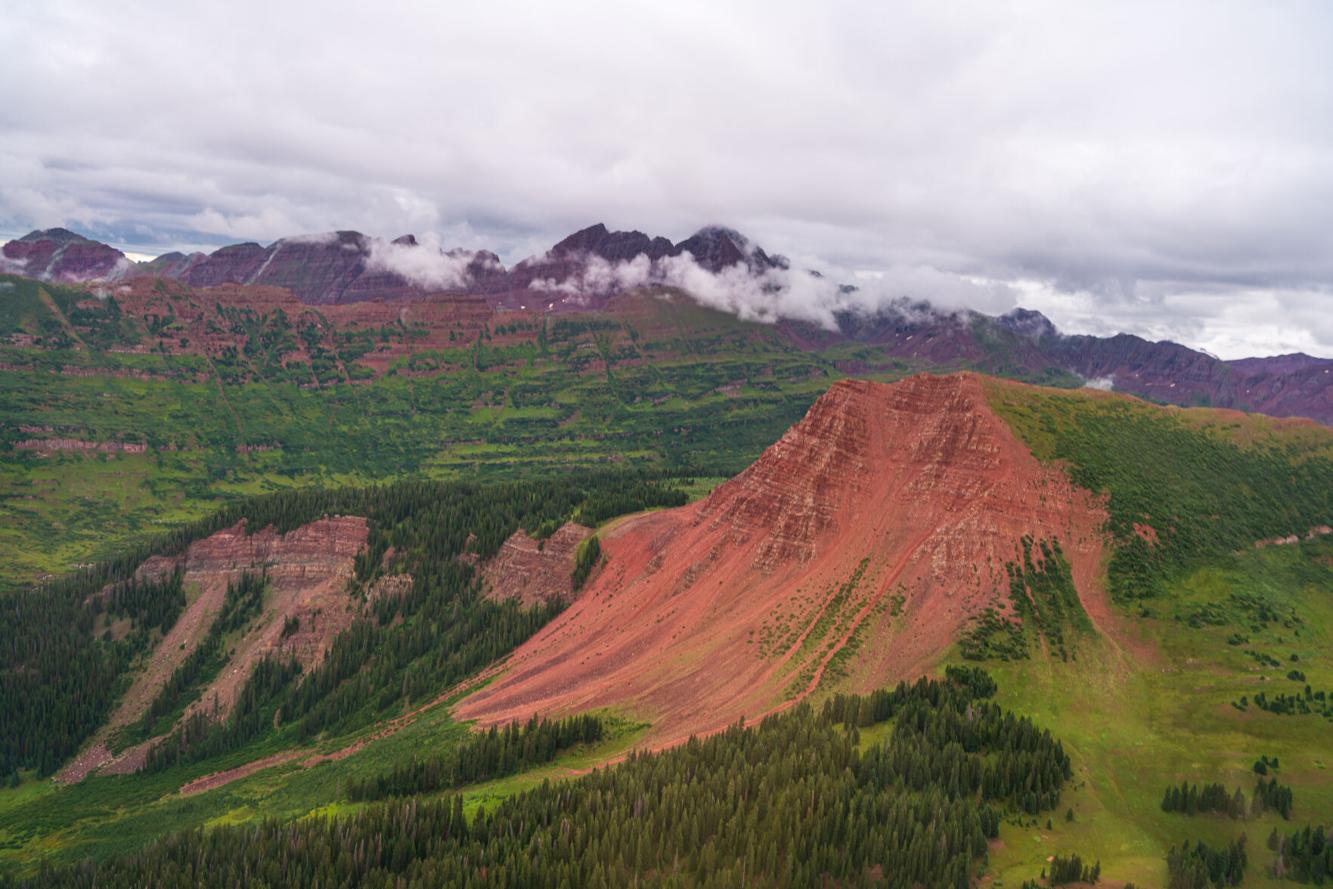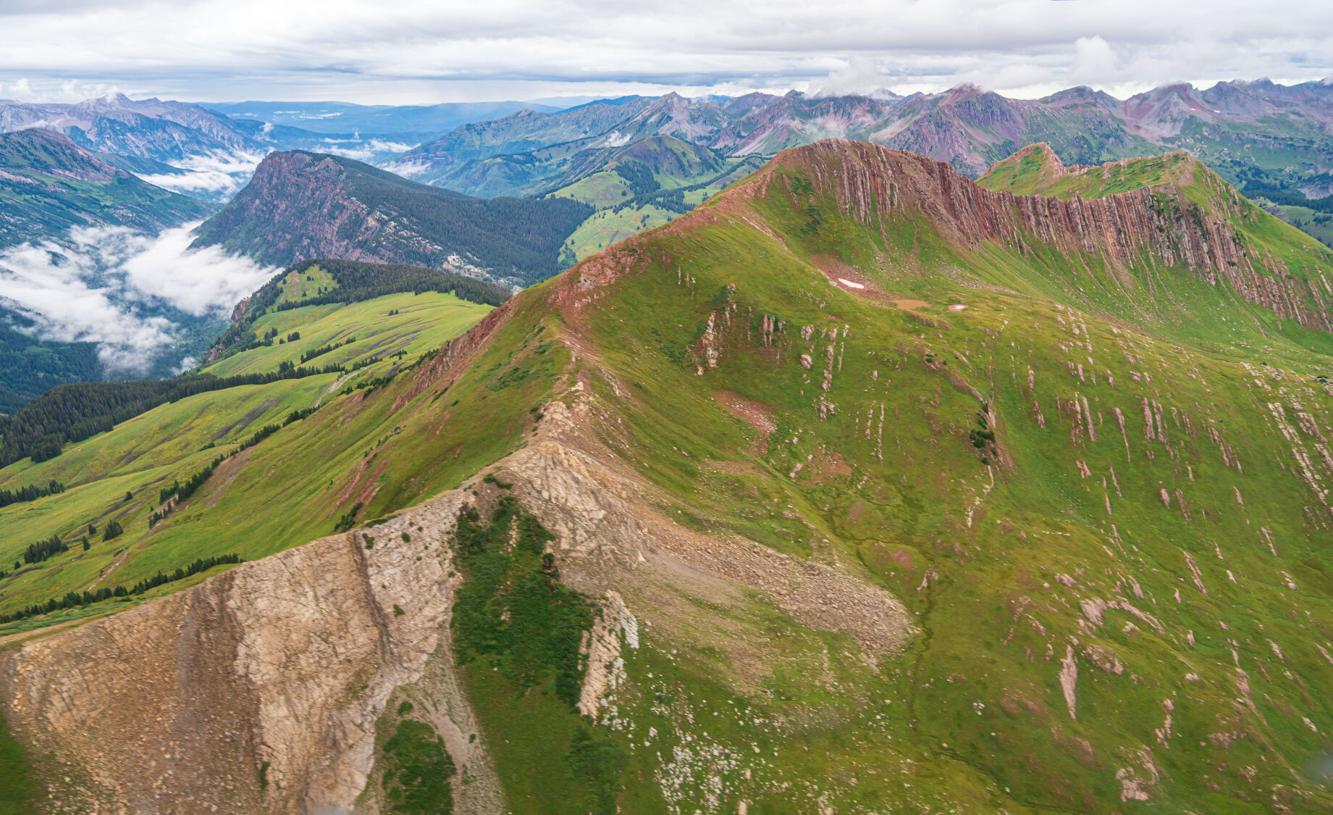
After wrapping around Mt. Sopris and buzzing past Redstone toward Marble, the full majesty of the Crystal River basin came into clearer focus Tuesday morning from a vantage point of about 12,000 feet.
Towering Snowmass Mountain was shrouded in clouds left over from Monday night’s soaking. A white ribbon of water spilled down from Lake Geneva through a deeply furrowed landscape, looking like a zipper in crinkled clothing. Treasure Mountain, Sheep Mountain and innumerable surrounding peaks were covered in emerald-green grass after a summer of ample precipitation. Past Crystal City, the headwaters of the Crystal River split into north and south forks that penetrate some of the most rugged and scenic terrain in the heart of the Elk Mountains.
Bruce Gordon, founder of the Aspen-based conservation group EcoFlight, piloted a Cessna single engine Centurion 210 to provide a tour for journalists studying the campaign to get 39 miles of the Crystal River federally designated as wild and scenic.
Gordon’s goal is to get as many stakeholders into the air as possible to see why the river is so valuable and worthy of special protection. He believes the aerial view can overcome ideological bickering.
“When people learn what the designation is about, there’s really no reason to oppose it,” he said.

The rallying cry for supporters is, keep the river as it is. Gordon said the Crystal speaks for itself.
“That’s as spectacular of a landscape as anywhere in the continental U.S.” he said.
Michael Gorman, campaign manager for Wilderness Workshop, a locally grown conservation group, was the tour guide for media on the EcoFlight.
“What makes the Crystal River unique is it doesn’t have a dam,” he said.
That is unique even within the Roaring Fork basin. The Roaring Fork River has a dam above Lost Man Campground. The Fryingpan River, of course, has Ruedi Dam 13 miles east of Basalt. Numerous tributaries at the headwaters of the two rivers are pocked with diversion structures that deliver water out of the basin.
While details are yet to be worked out, the general plan is to seek wild and scenic designation for the Crystal River in the Maroon Bells-Snowmass Wilderness, through the Marble and Redstone stretches and down the point where the Sweet Jessup ditch and pipeline sucks a considerable amount of the water for irrigation. That diversion is located between Avalanche and Perham creeks. The stretch of the Crystal River through the irrigated fields in Garfield County isn’t part of the effort.
The primary reason to support the designation is to prevent dams and out-of-basin water diversions, said Bill Jochems, a longtime resident of Redstone who recently moved to Carbondale. He has supported the wild and scenic designation for the Crystal River for decades.
Even though plans for dams affiliated with the proposed Osgood Reservoir near Redstone and the Placita Reservoir upstream were extinguished about a decade ago, no source of water is safe from being tapped in the thirsty West, he said. Wall Street speculators are snatching agricultural water rights for development and all sorts of major schemes are being hatched to divert water in the West, so it only makes sense that the Crystal River will once again be in the bullseye in the future, he said.
“This is such a simple thing we’re after,” Jochems said. “All we want is a prohibition against dams and taking water out of this basin.”
Gorman contends that allowing a river to go through its natural cycles unfettered by a dam is more valuable for many people than tapping another source of water for growth and development. A river without a dam leads to a healthier ecosystem, supporters contend.
A prior effort to gain the designation was shelved in 2016 after Donald Trump was elected president and general sentiment was stacked against federal intrusions — real or imagined — into land and water matters. Some landowners in the Marble area soured at the prospect of the designation for fear it might interfere with their rights. Marble’s support is critical to the campaign gaining momentum. A wild and scenic designation requires an act of U.S. Congress. Support from the Colorado delegation would be a non-starter without local government support.
A renewed effort was recently launched to try to build support for the wild and scenic designation. A working group that includes Pitkin County, Gunnison County, the town of Marble, Wilderness Workshop, American Rivers, American Whitewater, Colorado River District and some private landowners has met to plan strategy for the campaign. A first step will be hiring a facilitator that will run an extensive series of public meetings. The U.S. Forest Service has deemed the upper Crystal River eligible for the designation.
“We are early in the process,” said Kelly McNicholas Kury, a Pitkin County commissioner and representative to the working group.
The meetings will provide a chance to discuss the federal Wild & Scenic River Act and how a designation could affect the Crystal River, she said. If there is a broad community census, a later step would be working with the Colorado Congressional delegation on a specific bill.
McNicholas Kury said getting the protections needed for the longstanding goals of preventing dams and diversions from the Crystal River won’t be quick or easy.
“These river designations are difficult,” she said.

An upper stretch of the Poudre River has the only wild and scenic designation in Colorado.
Pitkin County commissioners earmarked an additional $100,000 to pursue the designation for the Crystal River in May. “The goal of designation is to prevent dams from being built on the upper 39 miles of this beautiful river and to preserve the Crystal River’s status as a free-flowing stream,” a staff memo in support of the expenditure said.

Jochems said getting all issues on the table for public debate and crafting the right language for a possible Congressional bill will be the keys to achieving designation.
Regarding public meetings on the designation, he said, “We’ve got to do a better job of explaining what it is and what it is not.”
A bill can be specifically tailored to suit the wishes of the local residents, he noted. There isn’t a standard list of conditions that are required by the federal government. For example, of the latest 20 designations for wild and scenic rivers, 19 exclude power for condemnation of private lands to achieve conservation goals, according to Jochems.
EcoFlight’s Gordon believes that the more people the organization can get in the air to see the Crystal River and its environment, the better the chances for achieving the designation.
“We’ve flown a lot of people,” Gordon said, estimating EcoFlight has provided 12 trips to stakeholders and media so far. “We want to fly more.”